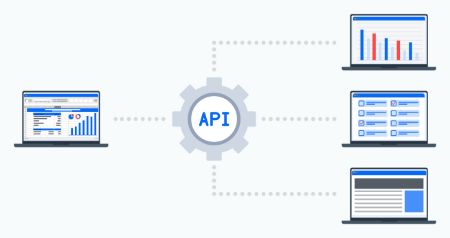At one point in your career, buying the components you needed was probably easy. You drove over to Radio Shack or Fry’s Electronics and picked-out your capacitors, resistors, pots or whatever from the store inventory, paid in cash, and went home to solder in your basement.
But if you stayed in electronics (and chances are that you have since you’re reading this) things got a bit more complex as your responsibilities increased. Now you may have production runs to cope with, lead time estimates, pricing headaches, and end-of-life critical parts announcements. It may be safe to say you could use a little help. Enter API/EDI, a slick digital solution for your purchasing headaches.
What are API and EDI Solutions for Purchasing?
API and EDI are digital communication applications that allow for accurate and real-time data interchange between your in-house purchasing system and that of your authorized electronic component distributor or other parts supplier. API is the connection method, and EDI is the standard for the data. Using these applications, you can automate tasks like order placement, inventory search, shipment tracking, and researching product information.
API (Application Programming Interface) is a set of rules that enable software applications on different systems to communicate with each other and exchange data, features, and functionality via the cloud. Simply put, an API allows you to integrate data and services from other applications instead of developing them yourself. This saves time and effort and allows the sharing of data and functions with business partners or third parties. They are secure because they only allow sharing of necessary information in small packets that are relevant to a specific request.
APIs help save time in a digital supply chain that can include real-time inventory levels, pricing, order status, shipment logistics, and more. An API solution works invisibly to end-users, communicating data machine-to-machine.
EDI (Electronic Data Interchange) is the exchange of information between trusted computers in a standard electronic format. This allows efficient communication of data straight to the appropriate application on the receiving computer, saving processing time, reducing errors, and cutting costs.
API works along with EDI to help you make the best buying decisions possible by arming you with accurate and real-time data on parts, inventories, prices, and shipping. Common documents exchanged through an API/EDI solution include purchase orders, invoices, shipping notices, bills of lading, inventory documents, and payment notifications.
API/EDI is like having a personal digital assistant who can instantaneously give you the accurate and real-time data you require from your supplier and integrate it into your designated application. This can make you more efficient and effective as a buyer, and also improve the performance of your supplier.
In your exploration of API/EDI technology for your business, you may also hear about something called Punchout platforms. This technology allows for a supplier’s product catalog to be a real-time part of an e-procurement system, effectively integrating shopping into the procurement process.
What Does This Mean to Me?
If you’re a purchasing professional, the benefits are obvious, and you are likely already using either an EDI or an API tool, or an integration of both in your work. If you are an engineer, having access to component inventories can help you decide on a specifying a particular part. And if you are a student of electronics, you will likely be using these systems in your future.
By the way, if you are a student of electronics, or someone brushing-up their circuit-building skills, check out our friends over at www.CircuitBread.com. They have tons of relevant content to help you learn, update, or refresh your skills.
How to get Started with API/EDI
If you don’t have an API/EDI solution in place, software options are available from several third-party suppliers. Onlinecomponents.com, an authorized distributor of electronic components, works with several solution providers, including: CalcuQuote, SupplyFrame, Orbweaver, and Luminovo.ai. You may want to explore what each has to offer.
If you’re ready to take advantage of this technology with your electronic component purchasing, you can reach out to an account manager at Onlinecomponents.com to get your API/EDI solution process started. The OLC tech team will collaborate with your professionals to go over the details of linking systems and making sure the data exchange is working properly. Then you are ready to go!
Summary
API/EDI integration offers a platform for business partners to share business-to-business information in an automated format that can enable fast, accurate, relevant, and real-time data exchange for better business decisions. No matter your current position in the electronic component supply chain, you can expect the refinement of this technology to impact what you do and how you do it.
contáctenos:
 ES
ES
 English
English
 Chinese
Chinese
 Italiano
Italiano
 Portuguese
Portuguese
 Deutschland
Deutschland
 French
French
 Russian
Russian
 Japanese
Japanese
 Turkish
Turkish
 Korean
Korean
 Spanish
Spanish
 mi cuenta y pedidos
mi cuenta y pedidos

